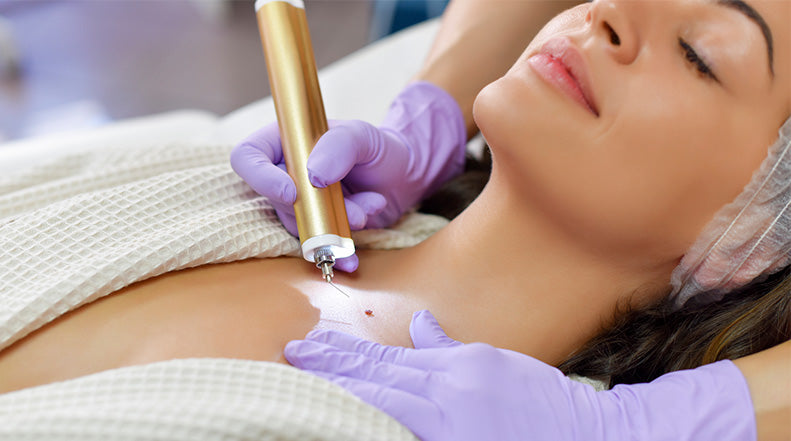8 Tips for Treating Mohs Surgery Scars

Many patients who have had skin cancer surgery worry about resulting scars. It’s certainly reasonable because skin cancer most often affects a person’s face along with other areas that are often seen by the public.
Mohs surgery was created to minimize scarring by creating the smallest surgical wound possible. The danger in Mohs surgery, however, is that the toughest outer layers of skin are removed during the surgery; making the skin in that area more susceptible to damage. This article will review some of the important steps to follow after receiving Mohs surgery to minimize the impact of long term scarring.
TIP # 1 - BE PATIENT
Statistics show that Mohs surgery is an effective and safe surgery. While the healing process is quick in some individuals, other times the healing process is prolonged. It is very important that patients give their body the time it uniquely needs to recover from this procedure.
TIP # 2 - LIMIT EXPOSURE TO THE SUN
Many Mohs surgery patients might know that it is important to avoid direct exposure to the sun, but it is critical to follow this advice. Even if the cancerous part of the skin has been removed, the remaining layers are even more susceptible to being damaged by the sun. It is important that after Mohs surgery, a person takes all precautions to cover the vulnerable area when outside for an extended period of time.
TIP # 3 - PROTECT THE WOUND
Because Mohs surgery removes the protective part of a person’s skin, make sure to properly treat the remaining exposed area of skin gently. This advice is not only regarding sun exposure, but other threats of irritation or pressure.
TIP # 4 - USE HIGH QUALITY TREATMENT PRODUCTS
The skin surrounding the Mohs surgery wound requires significant attention and care. Conscientiously follow your doctor’s orders. You may benefit by using several skin care products based on what will best help your body. It is important to remember that because each Mohs surgery is slightly different, the exact products patients need to use varies.
TIP # 5 - KEEP THE WOUND MOIST
Not just with Mohs surgery, but any type of wound heals better if the area is kept moist. In many cases if a scar develops over a person’s Mohs surgery site, it means the area was allowed to become too dry. Patients may be advised to keep their wound sufficiently moist by applying ointment to the area. Creating a barrier to water loss is important and can also be accomplished with silicone sheeting which would be applied after the wound has closed.
TIP # 6 - LIMIT ACTIVITY
Immediately after Mohs surgery, patients should limit activity to avoid stretching the site of the wound. It is important to remember that after skin cancer surgery, the affected area is temporarily not as strong as it once was. If the affected area involves a body part that often bends or moves, it is especially important to follow this advice until the wound has an adequate amount of time to heal.
TIP # 7 - SIGNS THAT HEALING IS NOT OCCURRING PROPERLY
It is imperative that a patient knows the signs that a wound is not properly healing and learns how to respond to these signs in a timely way. One of the most common symptoms is bleeding from the site. In these situations, the patient should hold firm pressure to the area for 20 minutes. Another common healing problem is infection, which involves expanding redness, warmth and tenderness at the affected site. If a patient experiences either bleeding that continues after pressure or infection, immediately contact the physician.
TIP #8 - FIND THE SCAR TREATMENT GEL YOU NEED
These are just some of the best steps to take to avoid the lasting effects that a skin cancer surgery scar can have. Silicone has long been recognized for its ability to aid in flattening, reducing and fading scars, which can prove to be particularly valuable if you are recovering from Mohs surgery. Fortunately NewGel+ just launched NewGel+UV which harnesses the efficacy of Medical Grade Silicone and the UV protection of a Mineral Sunscreen to deliver a 2 in 1 solution for Mohs surgery or any other scars exposed to sunlight.
Related Articles:




Comments